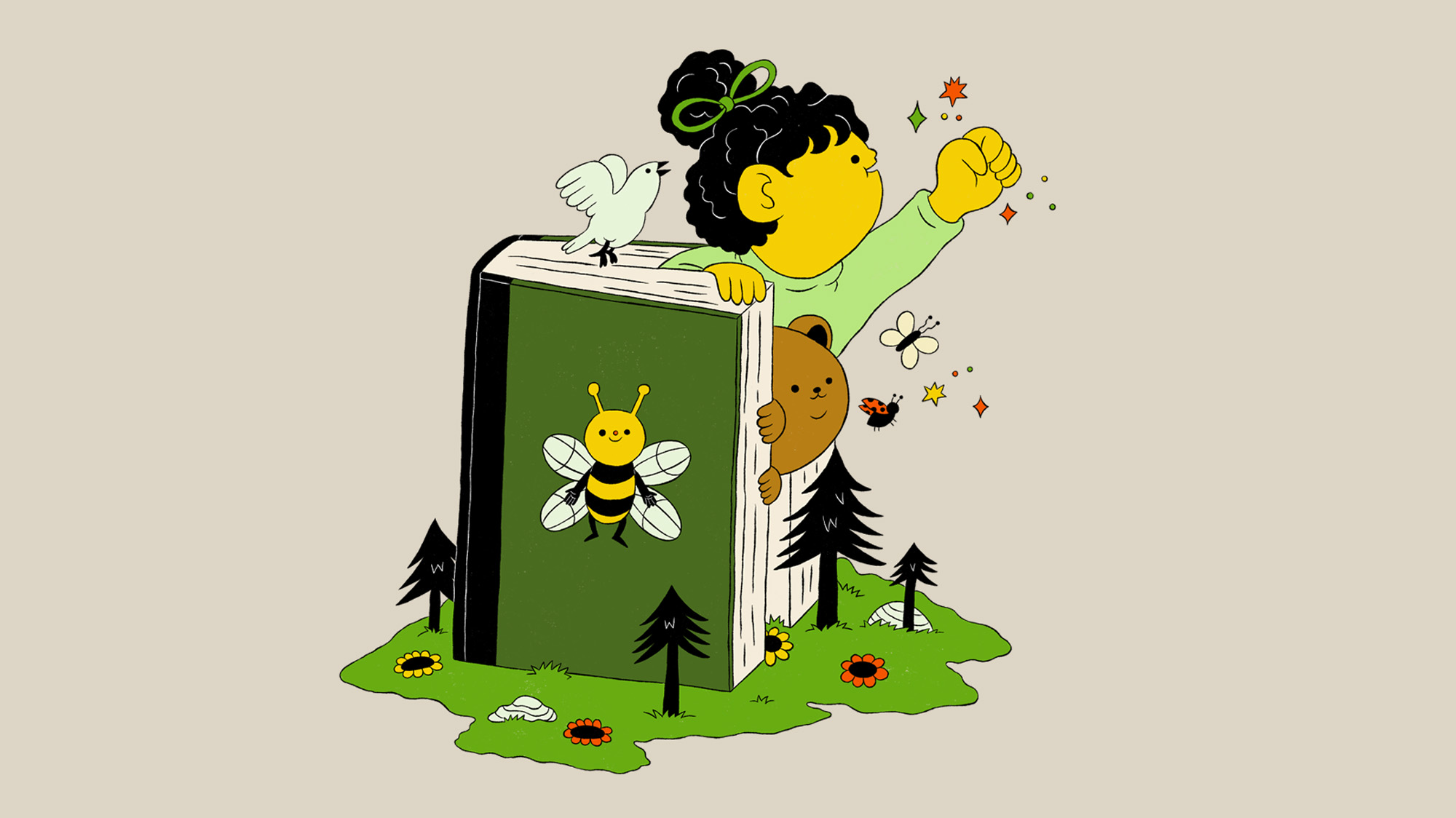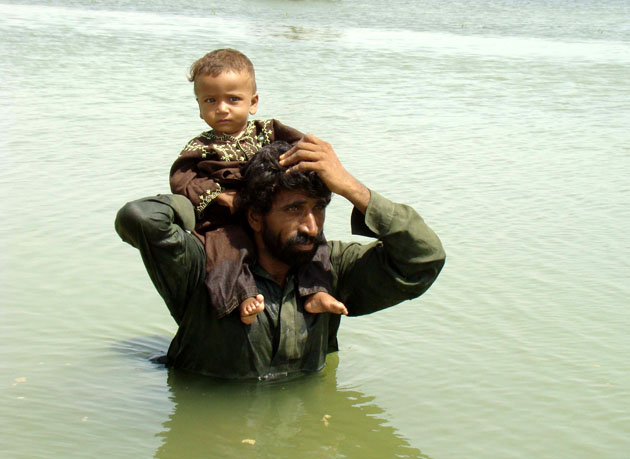When author Katherine Applegate was touring schools for her book Wishtree—a novel on prejudice for tweens, told through an oak tree’s perspective—students kept wanting to talk about the climate crisis. They were stressed about whether polar bears would die, panicked about the world they’re inheriting. Their questions inspired Applegate, but she was daunted: Her previous books have dealt with heavy topics like animal cruelty and poverty. Climate collapse, though? That’s a challenge.
But it’s one that children are grappling with. A 2021 worldwide survey of 10,000 young people published in The Lancet found that 59 percent were very or extremely worried about climate change and 75 percent felt the future is frightening. The publishing industry has embraced the mood: According to Nielsen’s publishing market research, sales of children’s books related to the environment rose 69 percent between 2019 and 2021. These aren’t just tales about animal tea parties or Truffula trees. Inspired by Greta Thunberg, these books capture kids’ anger and despair, and are loaded with calls to action.
Take Sita Brahmachari’s Where the River Runs Gold, a 2019 middle-grade novel set in a dystopian future where bees have died off and children must labor to pollinate crops. Or Lily Williams’ picture book series on extinction, If Animals Disappeared, launched in 2017. We Are Water Protectors, a 2020 picture book by Carole Lindstrom, illustrated by Michaela Goade, and inspired by the Dakota Access Pipeline protests, was a bestseller.
Applegate—who jokes that her “default setting is pure and utter pessimism”—tackled those emotions in her latest book, Willodeen. Targeted to kids ages 8 to 12, it’s set in the village of Perchance, with fantastical animals like the flying hummingbears and stinky screechers. Perchance is also beset by disasters and droughts. The title character’s parents are killed in a catastrophic wildfire. “It almost seemed the earth was mad at the lot of us,” Willodeen laments.
Mental health research has shown that focusing on doom and gloom can paralyze people into inaction, while more inspirational and action-oriented work can be motivating. To that end, Applegate says she wasn’t worried about creating a world fraught with eco-crises—children are “so much more sophisticated and enlightened and aware and idealistic” than we assume, she says. Instead, that backdrop sets the stage for a hopeful triumph, as Willodeen perseveres to advocate for troubled species to uncaring politicians.
Another model comes from Coco’s Fire, co-written with the Climate Committee of the Group for the Advancement of Psychiatry, a think tank of practicing psychiatrists. When Coco, a young squirrel, learns about climate change–fueled disasters, an inner fire symbolizing her anxiety starts burning red. As she meets other activists and starts cleaning up her own life, it cools into a blue flicker, one that helps her “get more involved, not upset.” Jeremy Wortzel co-wrote the book with his fiancée, Lena Champlin, as an alternative to the images of a lone polar bear or sinking cities that children might encounter. The flame is inspired by the visual metaphors that psychologists use to introduce children to big concepts like death. “That traditional trope of scaring people into agency, that we’re in trouble and you’ve got to act now…doesn’t help everybody,” Wortzel tells me. “We tried to get to the root of what that anxiety that spurs people is actually doing.”
Will a scared squirrel or a magical village really soothe kids’ existential dread? The climate crisis is what philosopher Timothy Morton calls a “hyperobject,” something so unmanageable it overwhelms people’s minds. The mental health community has no official guidance on treating climate anxiety, but studies have found that individual actions help patients cope. Coco’s Fire follows a six-step “Climate Talk” guidance developed by the psychiatrist group. First, they say, introduce climate change and find out what children already know. That’s followed by simple scientific explanations and a clear (not sugarcoated) discussion of what it means, reasons to hope, and ways to get involved. The talk ends with a reminder of the wonders of the natural world.
Leslie Davenport, a therapist and author of the kids’ climate anxiety book All the Feelings Under the Sun, says the conversations look different based on age. Kids younger than 6, she says, tend to develop an innate sense of stewardship for nature. As kids become aware of climate news, Davenport focuses on small actions like recycling or driving less. Around age 10, she says, the “despair” creeps in and the conversation needs to evolve. Narratives about triumph in the face of realistic crises, she says, are therapeutic. “A story that is purely apocalyptic isn’t helpful, but one where emotions are acknowledged and kids can find ways to navigate their feelings and get involved, that can break through,” Davenport says.
Goade says that was the goal of We Are Water Protectors. The idea of Indigenous people fighting an oil pipeline (represented as a black snake) sounds overwhelming. But she and Lindstrom felt that it was a perfect story to offer inspiration in the face of the insurmountable. In virtual book talks, students eagerly asked what they could do to help the water protectors.
“As children’s book authors, someone once said we are ‘peddlers of hope,’” Goade says. “That can be a bit of a challenge when we’re feeling underwater with the current state of things. But it’s also a really amazing thing.”













